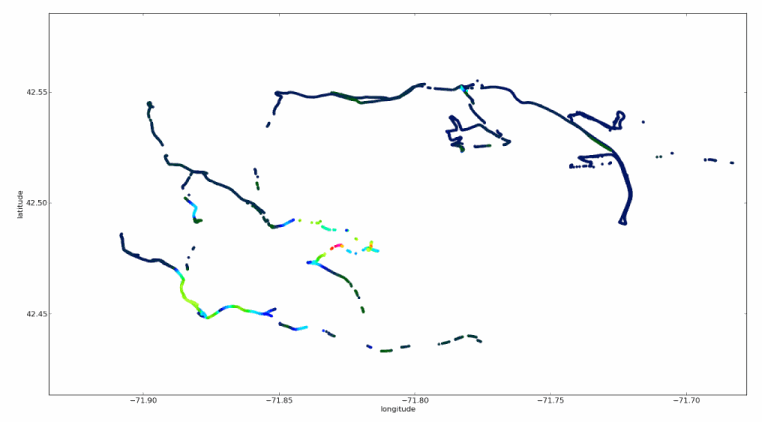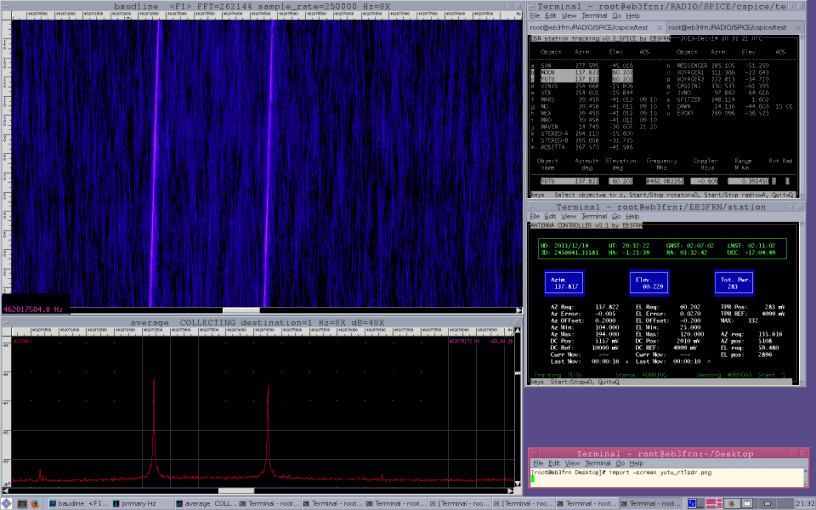Locating an Interfering Signal with Radio Direction Finding and the RTL-SDR
The people at the MIT Haystack Observatory discovered recently that someone was transmitting an interfering signal on their licensed radar band. The interferer was effectively jamming the radar, preventing them from carrying out any experiments.
After checking for local causes of interference and finding nothing, they decided that the interferer must be coming from further away. To find the location of the jamming signal they did some radio direction finding. This involved driving around with Yagi and magnetic loop antennas and RTL-SDR and USRP N200 SDRs and then measuring the signal strength at various points.
For the software they used a custom GNURadio block which calculated the power spectra using the FFTW C library, and averaged the results to disk. They then post processed the data to calculated the RFI power, and correlated the data with GPS coordinates recorded on his phone.
After all the data was processed, they discovered that the interference originated from an FM radio tower which had a faulty FSK telemetry link. They notified the engineer responsible who then replaced the link and the interference disappeared.




